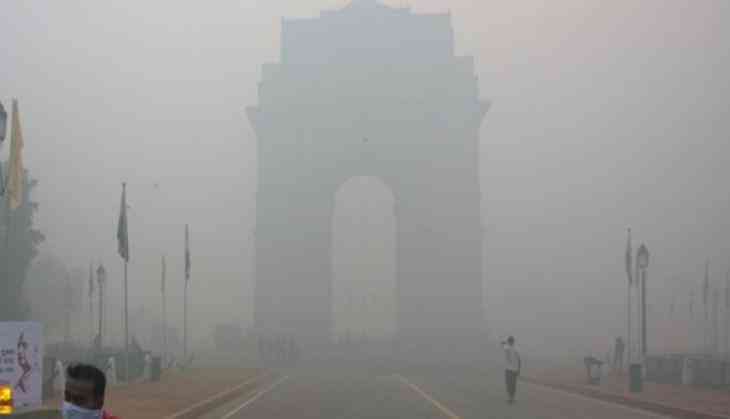
Delhi air quality becomes more deteriorated after the Diwali celebration in the capital on Wednesday. As per the reports, the air quality turned to ‘very poor’ after Delhiites burst the firecrackers for a long time even after the guidelines given by the Supreme Court of India to burn the crackers.
On Thursday morning, the capital has been covered with a thick layer of smog.
The reports suggest that the overall Air Quality Index (AQI) was recorded at 302 at 11 pm, which comes under the poor air quality, according to the Central Pollution Control Board (CPCB).
The air quality in Delhi started deteriorating rapidly at 7 pm. The AQI at around 7 pm was 281 which kept on raising- at 8 pm it was 291 and further deteriorated to 294 at 9 pm and 296 at 10 pm, according to the CPCB.
Check out some visuals:
Thick layer of smog engulfs Delhi; visuals from near Akshardham Temple. pic.twitter.com/K02CO18o5r
— ANI (@ANI) November 8, 2018
Thick layer of smog blankets South Block in #Delhi pic.twitter.com/FebOKFIhgf
— ANI (@ANI) November 8, 2018
Delhi: According to the Air Quality Index (AQI) data, major pollutant PM 2.5 and PM 10 are at 500 (severe) in Lodhi Road area, on the day after #Diwali pic.twitter.com/a7qe2SEPhb
— ANI (@ANI) November 8, 2018
Earlier, the Supreme Court of India had ordered that firecrackers can be burst from 8 pm to 10 pm only on Diwali and other festivals. Also, the apex court also allowed to manufacture and sale of only ‘green crackers’, which have a low light and sound emission and less harmful chemicals.
Earlier, the court had asked the police to ensure that banned firecrackers were not sold and said in case of any violation, the station house officer (SHO) of the police station concerned would be held personally liable and it would amount to committing contempt of the court.
But despite the top court order, there were reports of its violation from many areas long after 10 pm.
Meanwhile, the police have also admitted that there were violations of top court order and will take serious legal action.
-With PTI inputs
First published: 8 November 2018, 11:01 IST

